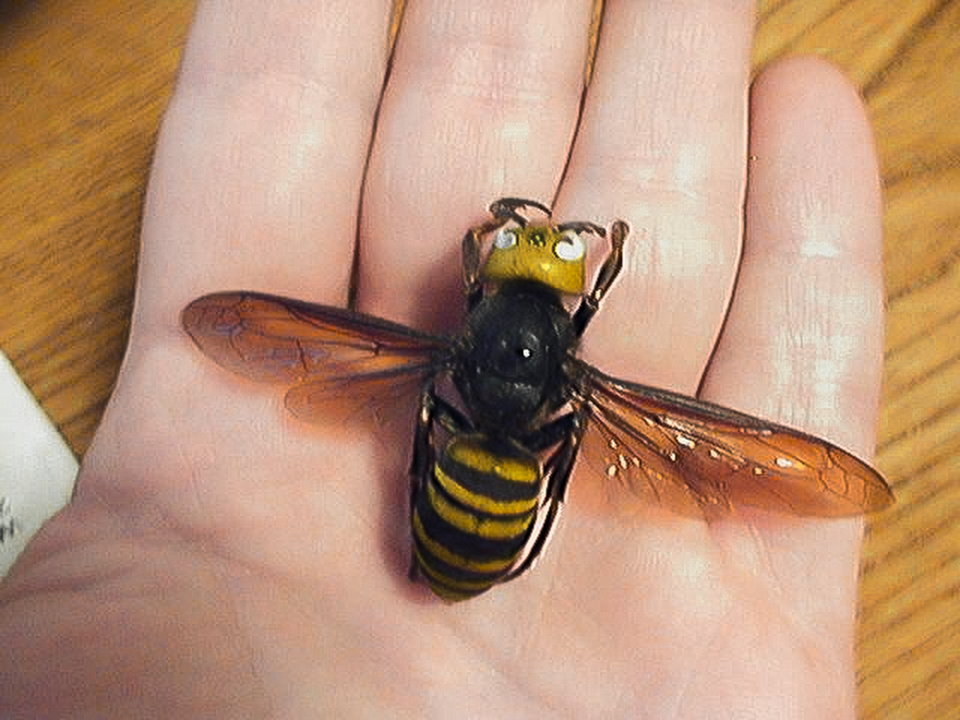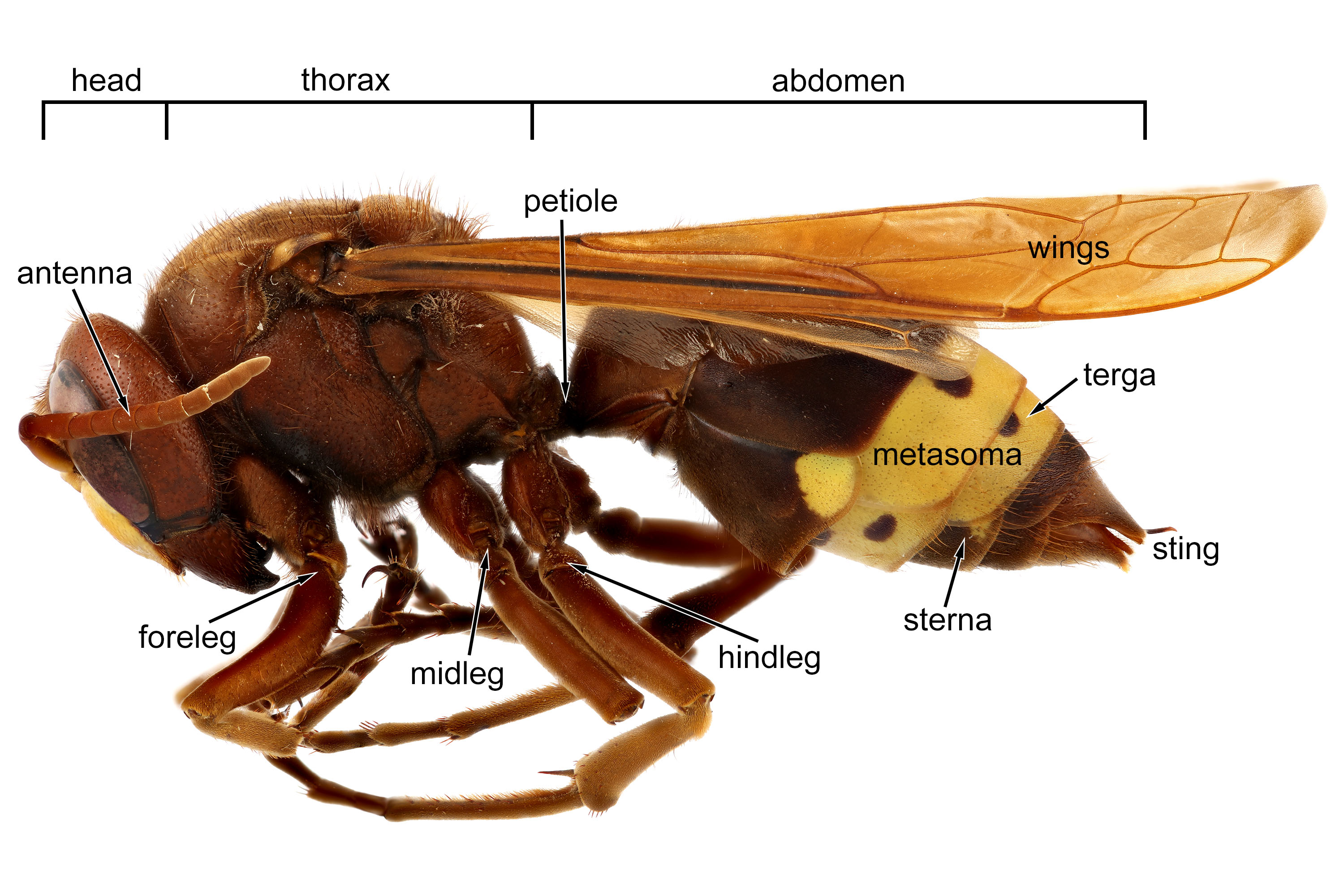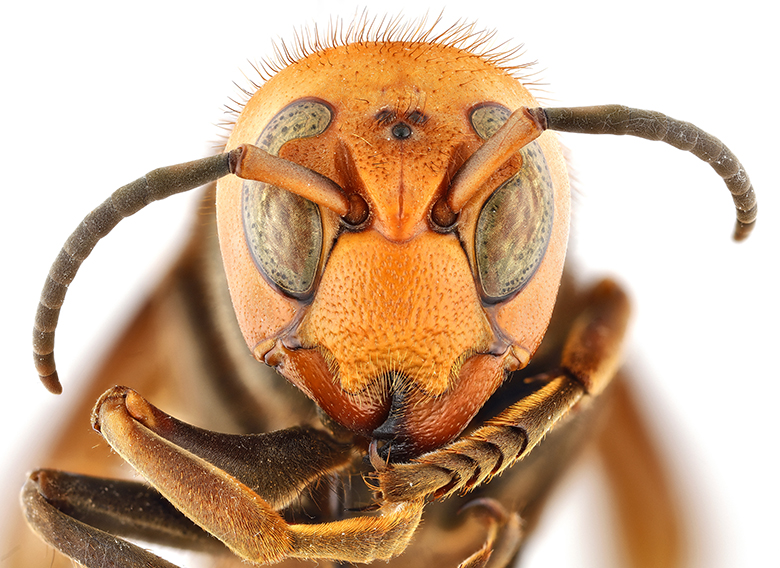The Asian Giant Hornet (Vespa mandarinia), also known as the world's largest wasp, is one of the most feared insects on the planet. With its impressive size, ferocious hunting techniques, and extremely potent venom, this creature instills fear in both insects and humans. But what makes this hornet so terrifying? Let's find out.

Monster Profile
Scientific Name: Vespa mandarinia
Family: Vespidae
Length: Up to 5 cm
Wingspan: Up to 7.5 cm
Coloration: Bright orange head, dark brown body with black and yellow stripes
Habitat: Japan, China, Korea, Taiwan, Vietnam, India, Nepal, and recently spotted in North America
Internal Anatomy
The Asian Giant Hornet has a highly specialized biological system, making it an extremely efficient predator.
Mouthparts: Equipped with powerful mandibles capable of crushing insects and slicing through tissue.
Respiratory System: Composed of a network of tracheae that enable rapid oxygenation of muscles, allowing for fast and prolonged flight.
Circulatory System: Open-type, with a tubular heart pumping hemolymph throughout the body.
Nervous System: Decentralized, with nerve ganglia distributed throughout the body for rapid responses to stimuli.
Venom Apparatus: Consists of a venom gland connected to a robust stinger capable of injecting a potent neurotoxin lethal to its prey.

Behavior and Habitat
This hornet is a ruthless predator. Unlike bees that collect pollen and nectar, the Asian Giant Hornet feeds on other insects, particularly European honeybees (Apis mellifera), which have no defense against its attacks. Workers of this species can wipe out an entire beehive within hours using their powerful mandibles.
It inhabits forests and hilly areas, digging underground nests or utilizing natural cavities. Each nest can house hundreds of individuals, with a single queen ruling the colony.
A Deadly Venom
The sting of this hornet is extremely painful, and its venom contains mandaratoxin, a neurotoxin capable of destroying tissues and causing severe allergic reactions in humans. In Japan, multiple sting incidents result in fatalities each year.
Symptoms of a sting include:
Intense pain and burning
Swelling and localized necrosis
Breathing difficulties in allergic individuals
In severe cases, anaphylactic shock
A Threat to Bees and the Ecosystem
The Asian Giant Hornet is one of the leading causes of honeybee population decline in areas where it has spread. However, Japanese honeybees (Apis cerana japonica) have developed a defense mechanism: they swarm around the hornet and vibrate until they generate enough heat to cook it alive.
In recent years, the Asian Giant Hornet has been sighted in North America, raising concerns about its potential ecological impact.
The Asian Giant Hornet is a formidable predator and one of the most feared wasps in the world. Although the risk to humans is relatively low, its impact on beehives and ecosystems is alarming. Ongoing research aims to monitor its spread and develop effective control methods.
If you find yourself in an area where this hornet is present, it's best to keep your distance and avoid provoking it—its sting is an experience you won’t forget!
Sources and Further Reading
For more information about the Asian Giant Hornet, check out these sources:








Leave a Comment